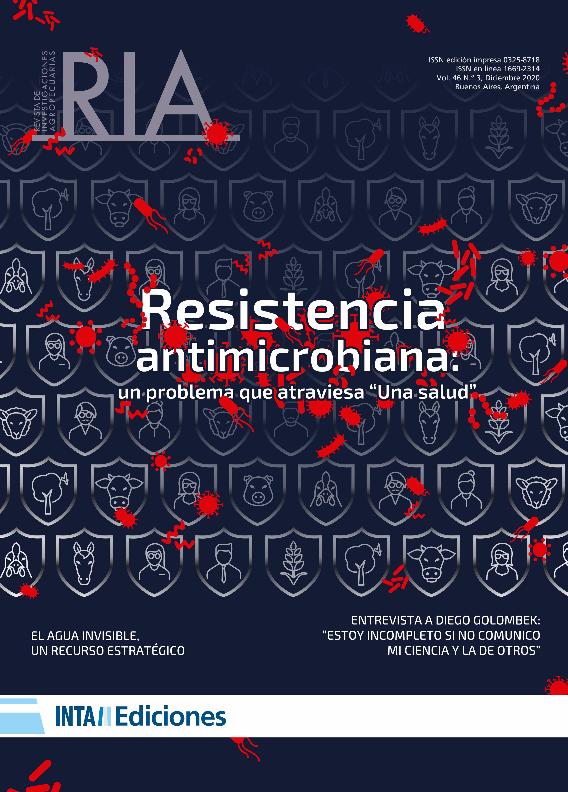Artículo
Las estimaciones de emisiones de gases con efecto invernadero (GEI) de suelos agrícolas informadas en el último Reporte Bienal de Actualización de Argentina en 2017 presentan gran incertidumbre debido a que se basan en el uso de factores de emisión del IPCC y no en mediciones directas a campo, lo cual limita la capacidad de planificar un desarrollo sostenible de bajas emisiones de GEI. El objetivo de este trabajo fue calcular las emisiones medidas de GEI de la caña de azúcar para la provincia de Tucumán y compararlas con las emisiones determinadas siguiendo el protocolo del IPCC. El cálculo y análisis de las emisiones de GEI se realizó por extrapolación e interpolación de flujos medios medidos a campo durante los ciclos agrícolas 2013-2014 y 2014-2015. Las emisiones totales de GEI (CH4 + N2 O) de la caña de azúcar en Tucumán fueron 343,6 Gg CO2 eq. para el ciclo agrícola 2013-2014 (normal a seco) y 404,9 Gg CO2 eq. para el ciclo agrícola 2014-2015 (húmedo). En un ciclo de precipitaciones modales se demostró que: i) el IPCC sobrestimó las emisiones provinciales en un 18,4%; y ii) una disminución de la superficie quemada se traduciría en un mayor porcentaje de sobrestimación por parte del IPCC. La brecha más importante con el IPCC está dada por el manejo de rastrojo y las emisiones durante el ciclo agrícola del cultivo. La prevención de la quema del rastrojo de la caña de azúcar conduce efectivamente a disminuir las emisiones totales de GEI de Tucumán, lo que puede revertir el efecto adverso sobre el incremento de las emisiones totales de GEI de los eventos extremos de alta precipitación. Estimations of GHG emissions from agricultural soils reported in the latest Biennial Update Report of Argentina of 2017 present great uncertainty because they are based on IPCC emission factors and not on direct field measurements. This limits the ability for planning a sustainable development of low GHG emissions. The objective of this work was to quantify the GHG emissions of sugarcane measured for the province of Tucumán and compare them with the emissions determined following the IPCC protocol. The quantification and analysis of GHG emissions was carried out by extrapolation and interpolation of mean flows measured in the field during the 2013-2014 and 2014-2015. The total emissions of GHG (CH4 + N2O) from sugarcane in Tucumán were 343.6 and 404.9 Gg CO2 eq. for the 2013-2014 (normal to dry) and 2014-2015 (wet) growing seasons, respectively. It was shown that, in a growing season of modal rainfall: i) the IPCC overestimated provincial emissions by 18.4%; and ii) a decrease in the burned area increased the overestimation by the IPCC. The most important gap with the IPCC was given by straw management and the emissions during the growing season. The prevention of straw burning effectively leads to a reduction in total GHG emissions from the sugarcane-soil system of Tucumán, which can reverse the adverse effect on the increase of total GHG emissions from extreme events of high rainfall.
Emisiones provinciales de gases con efecto invernadero del sistema suelo-caña de azúcar de Tucumán
Fecha de publicación:
12/2020
Editorial:
Instituto Nacional de Tecnología Agropecuaria
Revista:
Revista de Investigaciones Agropecuarias
ISSN:
0325-8718
e-ISSN:
1669-2314
Idioma:
Español
Tipo de recurso:
Artículo publicado
Clasificación temática:
Resumen
Palabras clave:
Bioethanol
,
Climate change
,
Methane
,
Mitigation
,
Nitrous oxide
Archivos asociados
Licencia
Identificadores
Colecciones
Articulos(CCT - SALTA-JUJUY)
Articulos de CTRO.CIENTIFICO TECNOL.CONICET - SALTA-JUJUY
Articulos de CTRO.CIENTIFICO TECNOL.CONICET - SALTA-JUJUY
Citación
Chalco Vera, Jorge Elías; Acreche, Martin Moises; Emisiones provinciales de gases con efecto invernadero del sistema suelo-caña de azúcar de Tucumán; Instituto Nacional de Tecnología Agropecuaria; Revista de Investigaciones Agropecuarias; 46; 3; 12-2020; 339-346
Compartir




